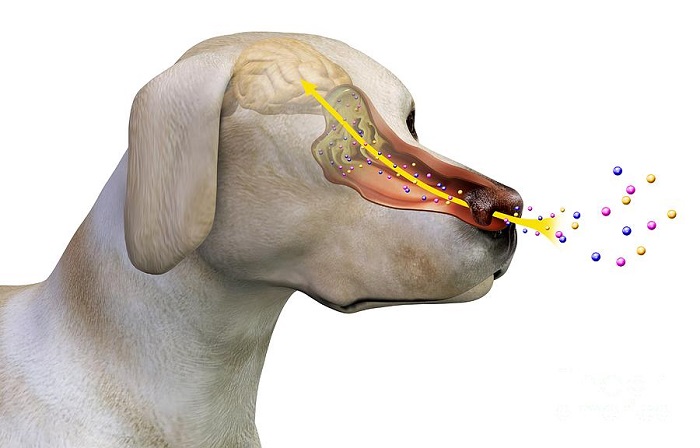
Dogs and other animals use their sense of smell to interact with their environment. This complex system provides information about their current environment and can recognize signals from the past. This complex network plays an important role in the basic activities of life. Dogs also use all of their senses to communicate with each other. Here are some facts about the olfactory system of dogs.
olfactory system in dogs
The olfactory system in dogs and other animals consists of a complex network of specialized sensory organs. These organs include the nares (outer nose), the nasal cavity, and the vomeronasal organ. Each organ has its own olfactory epithelium, which is covered with receptors. The olfactory system is responsible for developing an impression of smell and flavour, and determining the animal’s environment.
The olfactory system is important to dogs’ social lives. Dogs have specialized nose cells called Jacobson’s organ, which are found in the base of the nasal passage. The Jacobson’s organ focuses on pheromones and separates them from basic odors. Researchers at the University of Oslo have also determined that the Jacobson’s organ has its own nerves.
The olfactory system in dogs and animals is highly complex and has different genetic bases. This results in heterogeneous sensitivity levels among animals. For example, some animals are highly sensitive to certain amino acids, aliphatic aldehydes, acetate esters, sulfur-containing volatiles, and certain benzene derivatives.
The VNO, also known as Jacobson’s organ, is located along the right-cephalic portion of the nasal septum and is symmetrical on both sides. During smell, the sensory neurons in the VNO detect and process a vast variety of molecules. This includes a wide range of odour molecules with subtle shapes and stereoisomeric differences.
Canine olfactory system
The canine olfactory system is very complex and powerful. It helps dogs to detect prey and to perceive their environment. It could also have biomedical applications in humans. The vomeronasal organ (VNO) plays an important role in intra-species communication, detecting pheromones, and processing a wide range of molecules. The VNO also has the ability to detect viruses and their proteins.
The canine olfactory system is closely related to its structure. It differs from human olfaction in several ways. For example, dogs have larger OBs and more ORCs, which allows them to detect odor more precisely. Because of this, dogs are often difficult to predict their environment. Therefore, humans must adjust their techniques for cooperating with dogs in order to avoid problems related to odor detection. The ability of dogs to anticipate their environment may only become fully understood once humans have a better understanding of how they work together with each other.
The canine olfactory system is an important tool for interaction with its environment. This ability allows a dog to communicate with humans and other species. Dogs have been able to communicate with man for centuries by using this sense. While this ability is essential for inter-species communication, it has also been adapted for human communication.
The canine olfactory system is extremely structured and is necessary for efficient nasal odorant transport. This system is comprised of a variety of different parts, with the main olfactory epithelium located in the caudo-dorsal region of the nasal cavity. The vomeronasal organ is connected to the nasal cavity and is responsible for detecting pheromones.